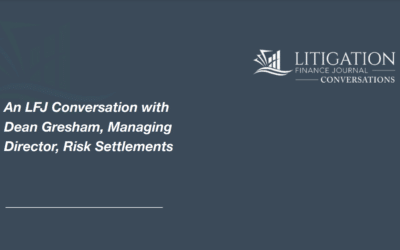Exploiting access to free money has now taken a dark turn costing companies millions of dollars in waste, fraud, and abuse. Current conventional wisdom among administrators is that they are concerned about organized crime and bad actors, filing tens or hundreds of thousands of fraudulent claims in a single case. Rampant fraud is coming from all corners, including bots from Asia and Eastern Europe, and criminal activity in the United States. The fraud has been so pervasive that some administrators have even contacted law enforcement as the level of sophistication and the money at issue has increased substantially.
How to Prevent Fraud
While that is an easy question, the answer is not simple. Fraud is dynamic and insidious. Bad actors are always looking for vulnerabilities in the system and are constantly changing tactics to stay one step ahead of the antifraud measures. Drafting the settlement agreement containing ordinary and customary fraud prevention terms allows for investigation and audit. Additionally, hire an administrator which has established antifraud protocols in place to prevent and find patterns of widespread fraud. One telltale sign of fraud occurs when claims are coming in at a certain rate and all of the sudden, there is a massive, inexplicable tidal wave of claims for a period of time but then, just as fast as it starts, it’s gone. Flagging unusual activity is a critical component in fraud detection. There are dozens of different elements of a claim that can be analyzed several different ways to see if it has indicia of a bot claim including data being input, where traffic is coming from, timing of claims, and location of claims.
Some additional solutions which can help mitigate, but not remove, fraud:
- Use unique class member identification numbers in all cases including publication-only settlements.
- Have claimants register with both their email address and home address and then use OTP (one time passcode) to gain access to the claims site, which tracks IP addresses.
- Audit claim filings against both the company records and substantially similar cases.
- Allow the administrator to request additional information from claimants to validate submission.
- Look at email addresses from non-commercial providers or IP addresses from foreign sources.
- Investigate bulk emails from a single domain or those created just before or after the settlement website was launched.
- Investigate auto-completed claimant information which is inconsistent with class member information or demographics.
The ubiquitous goal among administrators we work with is and always has been to pay legitimate claims and to make it as easy as possible for legitimate claimants to receive the relief that they are entitled to under the terms of the settlement agreement, while also identifying waste, fraud, and abuse to the best of their ability.
The Rise of Promotion Sites and Fraud
Over the past decade, promotion sites, offering free money to people, have sprung up. Some sites boost over one million subscribers who are updated on the latest class action settlements and given a hyperlink to the claims website. This facilitates an entirely different type of fraud as many of the subscribers did not purchase the goods or services from the defendant, but seize the opportunity to receive compensation due to an easy claims process and few restrictions to recovery. Additionally, we have seen organized fraud once the promotion sites start advertising settlements. When a feeder website promotes a settlement, we usually see an uptick in claims, and then after that we often see an uptick in bot activity. In our experience there is a clear correlation between a promoted settlement and bots filling out claim forms. As a result, administrators should watch promotion sites, track inbound claims from those sites and subsequent claims traffic.
How Do Companies Mitigate the Financial Risk Arising out of Fraud?
The goal of eliminating fraud in class action settlements is both aspirational and unrealistic. The results can be unpredictable and devastating. For example, in a recent settlement over false advertising allegations, a food and beverage company received thousands of claims amounting to several million dollars which was unexpected and extremely costly. Some strategies to consider include:
- In addition to legal counsel, work with a company which has the knowledge and expertise on settlement design, crafting documents which will obtain court approval, and have appropriate fraud prevention guardrails in place.
- Hire an administrator which has tried and tested antifraud protocols in place to prevent, detect, and ferret out waste, fraud, and abuse.
- Bring evidence of fraud to both law enforcement and the Court
- Consider transferring the entire settlement risk by obtaining the nation’s only class action settlement insurance (CASI). By using CASI, companies remove the uncertainty and variability of claims rates and absorb 100% of the risk of financial loss arising out of fraud whether the claims are generated by promotion sites, bots, or organized crime.







